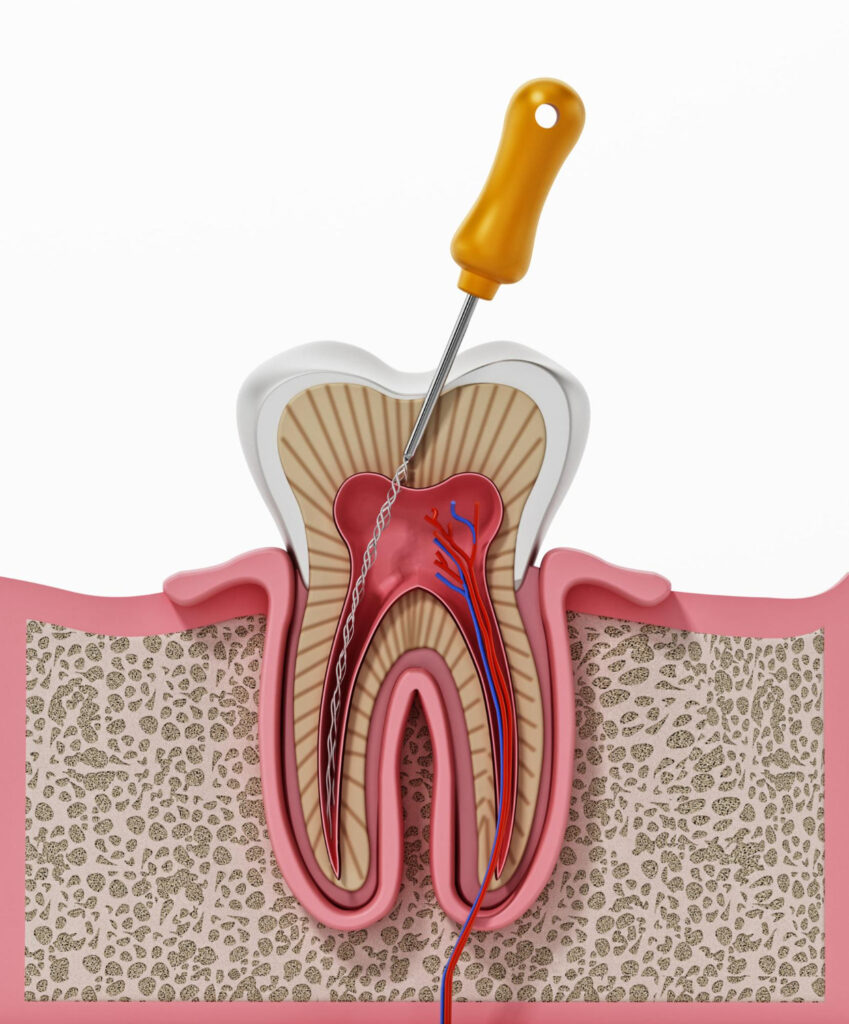Dental procedures often come with their share of fears and anxieties, and Root Canals are no exception. Many people shudder at the mere mention of the term “Root Canal.” But are they really as scary as they sound? To answer this question, let’s delve into the world of Root Canals.
Root Canals are dental procedures that save teeth suffering from severe decay or infection. Without this treatment, such teeth would often have to be extracted. Despite being a common dental procedure, Root Canals have garnered an unwarranted reputation for being painful and daunting.
As dental professionals, we, Dr. Richard Dawson and Dr. John Turke, often encounter patients who are apprehensive about the prospect of undergoing a Root Canal. Their fears are often fueled by misconceptions and a lack of understanding about the procedure. Hence, it’s crucial to demystify Root Canals and provide a clear, fact-based perspective.
Understanding What Root Canals Are

So, what exactly is a Root Canal? It’s a dental procedure designed to save a severely damaged or infected tooth. The procedure involves removing the infected or inflamed pulp from the inside of the tooth, cleaning and disinfecting the internal chamber, and then filling and sealing it. The final step typically involves placing a crown on the tooth to restore its strength and functionality.
Why might someone need a Root Canal? The most common reason is an infection or inflammation in the tooth pulp. This can be caused by severe decay, repeated dental procedures on the same tooth, faulty crowns, or a crack or chip in the tooth. In some cases, trauma to a tooth may cause pulp damage even if the tooth has no visible chips or cracks.
Understanding the process can help dispel initial fears associated with Root Canals. Many patients fear Root Canals because they imagine them to be excruciatingly painful. However, with today’s advanced anesthesia options and techniques, a Root Canal is as comfortable as getting a filling. The actual purpose of a Root Canal is to relieve pain, not cause it.
Therefore, as we pull back the curtains on what a Root Canal is and why it’s performed, it becomes clear that they aren’t as scary as they’ve been made out to be. Knowledge truly is power, and understanding Root Canals can help assuage fears and prevent unnecessary anxiety.
Myths vs. Reality: Root Canals

In the realm of dentistry, few procedures are as myth-ridden as Root Canals. Let’s take a moment to debunk some common myths and replace them with facts.
Myth #1: Root Canals are excruciatingly painful. The truth is, with modern technology and anesthetics, the procedure itself is relatively pain-free. The discomfort you feel is likely due to the infection, not the treatment. Root Canals, in fact, alleviate this pain.
Myth #2: Root Canals are unnecessary if the pain subsides. The fact is, even if the pain goes away, the infection doesn’t. It can spread to other teeth and even to the rest of your body, causing more serious health issues.
Myth #3: It’s better to extract the tooth than have a Root Canal. The truth is, it’s always best to keep your natural teeth whenever possible. Root Canals have a high success rate and usually last a lifetime. An extraction, on the other hand, can lead to other dental issues and more treatments down the line.
By addressing these misconceptions head-on, we can shine a light on the realities of Root Canals and remove the unfounded fears associated with them.
The Real Pain: Ignoring Necessary Root Canals

While many dread the thought of a Root Canal, the real pain often lies in ignoring the need for one. A necessary Root Canal left undone can lead to severe dental and health issues.
An untreated tooth infection can spread to other teeth and areas of the body, potentially leading to abscesses, swelling, bone loss around the tip of the root, and even systemic infection. It’s essential to understand that delaying a Root Canal due to fear can cause more harm than good.
To drive this point home, let’s consider a case from our practice. We once had a patient who delayed his Root Canal due to fear and anxiety. By the time he arrived at our office, the infection had spread, causing him significant discomfort and necessitating more complex and extensive treatment.
In another instance, a patient decided to pull out a painful tooth instead of opting for a Root Canal. This decision led to a series of dental issues, including bone loss and shifting of other teeth. Ultimately, she required a more complicated and costly dental implant procedure.
These cases underline the importance of not ignoring necessary Root Canals. The procedure, often misrepresented, is designed to save your tooth and prevent further dental complications.
How Technology Makes Root Canals Easier

Dental technology has advanced leaps and bounds over the past few years, and these improvements have made Root Canals a much smoother experience.
One such advancement is the use of rotary endodontics, a procedure that uses electric-powered instruments rather than traditional manual files. The electric handpiece used in rotary endodontics makes the Root Canal treatment faster, less noisy, and enables the dentist to perform the procedure with more precision.
Digital imaging also plays a crucial role in improving the Root Canal experience. With the help of high-resolution X-ray images, dentists can accurately view the intricate structures of the tooth and ensure all infection is removed. This precision minimizes the likelihood of retreatment.
In addition, local anesthetics and sedation dentistry have improved vastly. They allow for pain-free and anxiety-free procedures, even for the most nervous of patients.
In essence, technology has revolutionized Root Canals. It’s helped to dispel the myth of a painful procedure and transform it into a more comfortable, quicker, and more successful treatment.
Aftercare and Recovery: What to Expect After a Root Canal
The recovery process after a Root Canal is typically straightforward, with most patients resuming normal activities the next day. After the procedure, your mouth may feel slightly sensitive or uncomfortable, but these symptoms are temporary and can be managed with over-the-counter or prescribed medications.
Taking good care of your mouth at home is also crucial for recovery. This involves regular brushing and flossing, avoiding chewing or biting on the treated tooth until it’s fully restored, and avoiding hard-to-chew foods immediately after the treatment.
Regular follow-ups with your dentist are also crucial to ensure the tooth is healing correctly. In some cases, a permanent crown may be placed to strengthen and protect the tooth from further damage.
In essence, while a Root Canal is a significant dental procedure, it is manageable with proper aftercare and attention to oral hygiene.
Conclusion
Root Canals, contrary to popular belief, are not scary. They are crucial dental procedures that help save your natural teeth and prevent further dental and health complications. With modern technology and anesthetics, Root Canals have become far more comfortable and less intimidating.
If you are recommended for a Root Canal, do not let fear hold you back. Remember, our team at Smile Science Dental Spa, including Dr. Richard Dawson and Dr. John Turke, are here to guide you through every step, ensuring a comfortable and successful treatment. Your dental health is our top priority. So, don’t delay necessary procedures, and let us help you keep your smile healthy and bright.
Citations and Further Reading
- An insight into patient’s perceptions regarding root canal treatment: A questionnaire-based survey
- Evaluation of Some Dental Myths Among the Adult Population in Riyadh, Saudi Arabia: A Cross-Sectional Study
- Knowledge, awareness, and perception on root canal treatment among South Indian population – A survey
- Assessment of the Current Endodontic Practices among General Dental Practitioners in the Kingdom of Saudi Arabia
- The Level of Anxiety and Pain Perception of Endodontic Patients






